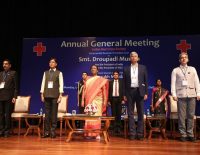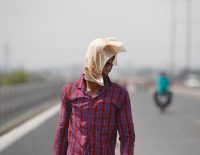Closely monitoring outbreak of H9N2 in China: Health Ministry

Amid the reports of clustering cases of respiratory illness in children in northern China, the union health ministry on Friday said that it is closely monitoring the outbreak of H9N2 and clusters of respiratory illness.
The health ministry said, “There is low risk to India from both the avian influenza case reported from China as well as the clusters of respiratory illness”. India, the ministry added, is prepared for any kind of exigency that may emerge from the current influenza situation in that country.
In a statement, the ministry said that based on available information, an increase in incidence of respiratory diseases in China has been reported in the last few weeks. “The usual causes of respiratory illness in children have been implicated and there has been no identification of an unusual pathogen or any unexpected clinical manifestations,” it added.
The World Health Organization (WHO) on Wednesday had said, “Chinese authorities from the National Health Commission reported an increase in incidence of respiratory diseases in China. Chinese authorities attributed this increase to the lifting of COVID-19 restrictions and the circulation of known pathogens such as influenza, mycoplasma pneumoniae (a common bacterial infection which typically affects younger children), respiratory syncytial virus (RSV), and SARS-CoV-2 (the virus that causes COVID-19)”. The global health body that since mid-October, northern China has reported an increase in influenza-like illness compared to the same period in the previous three years.
The ministry had also held a meeting recently under the Directorate General of Health Services to discuss the preparedness measures against human cases of avian influenza in the country against the backdrop of a human case of H9N2 (avian influenza virus) that was reported to the WHO, it said.
“The overall risk assessment by the WHO indicates a low probability of human to human spread and low case fatality rate among human cases of H9N2 reported to the WHO so far. The need for strengthening surveillance among human, animal husbandry and wildlife sectors and improving coordination was recognised. India is prepared for any kind of public health exigency,” the ministry added.
Meanwhile, talking to the newspaper, Dr Rajeev Jayadevan, Co-Chairman, National IMA COVID Task Force, said, “From China, there are reports of children getting respiratory symptoms severe enough to go to hospital. The increased patient load in hospitals has caused prolonged waiting times. This appears to be due to influenza, respiratory syncytial virus, adenovirus and Mycoplasma infections as China heads towards the first winter since pandemic restrictions were fully removed”. Dr Jayadevan added that these are seasonal infections, which have been on the rise unusually early in China since October. However, influenza and RSV have been active among children in India too.
However, the ministry said that India is embarking on a ‘One Health’ approach to adopt a holistic and integrated roadmap towards addressing such public health issues. There has also been a significant strengthening of health infrastructure especially since the Covid pandemic. In addition, India’s surveillance and detection networks under Integrated Disease Surveillance Programme (IDSP) have rich experience of dealing with challenging health situations during the Covid pandemic, the ministry said.








Comments